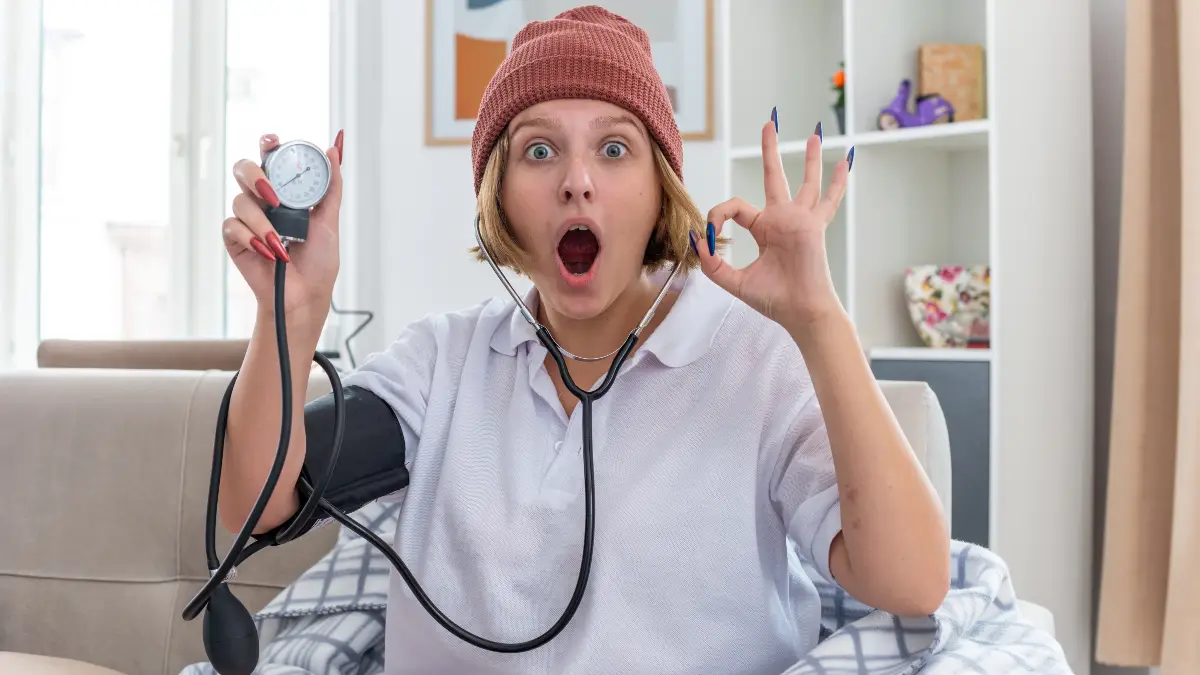What if the biggest risks to your heart aren’t in a doctor’s office, but sitting on your kitchen counter and in your office chair? High blood pressure is a quiet problem that puts massive strain on your body, and millions have it without any clear symptoms.
The scary part is that seemingly harmless daily choices are the main culprits behind this silent threat. By 2025, this issue will affect 1.5 billion people, and new guidelines mean millions more will be diagnosed.
This guide isn’t about fear. It’s about awareness. We’ll show you the 20 everyday habits secretly pushing your numbers up and give you simple, actionable steps to take back control of your health.
1. The High-Sodium Habit: Eating Too Much Processed and Restaurant Food
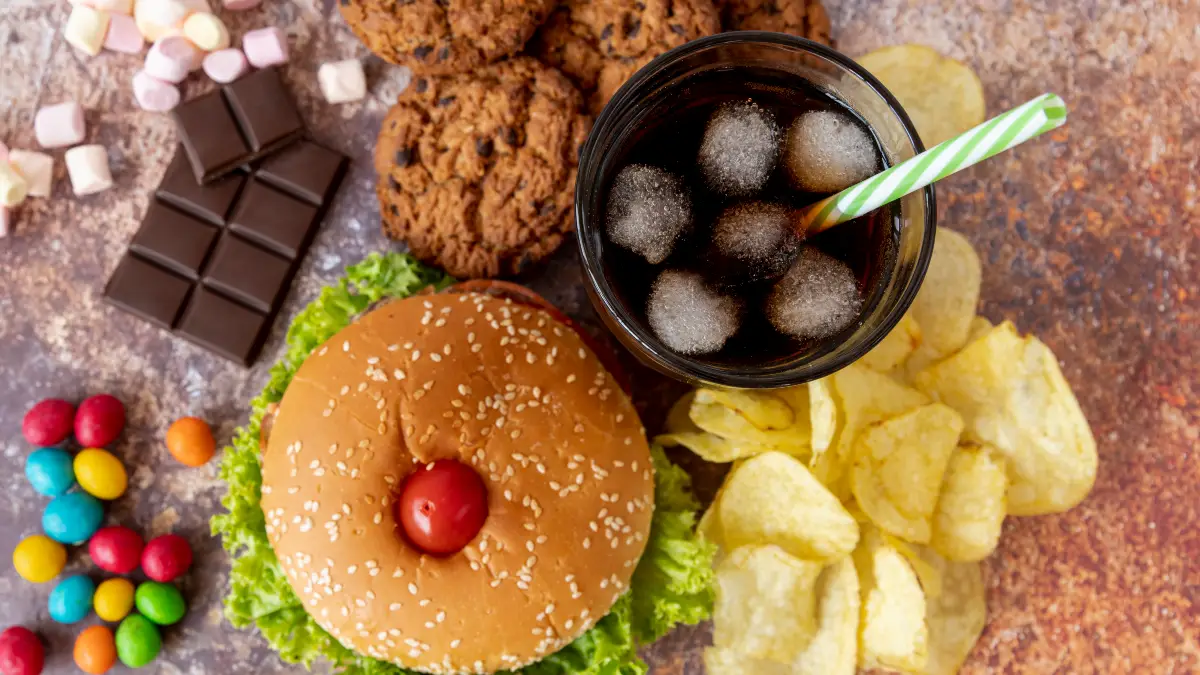
You eat a lot of packaged foods, fast food, or restaurant meals. The problem isn’t the salt you add at the table. It’s the salt that’s already in the food.
Your body needs salt, but too much makes you hold onto water. This extra water increases the amount of blood you have, which pushes harder against your artery walls. Over time, this makes your blood vessels stiff, and your heart has to work harder.
Health experts say you should eat less than 2,300 mg of sodium a day. But most people eat way more than that. The salt is hidden in foods like cured meats, canned soups, sauces, chips, and even bread.
- Your 2025 Action Plan:
- Beginner: Start reading labels. A food is low in sodium if it has 140 mg or less per serving. Just check one label the next time you shop.
- Intermediate: Cook one more meal at home each week. You control the ingredients. Try using garlic, herbs, or lemon juice for flavor instead of salt.
- Advanced: Look into the DASH diet. It’s full of fruits, veggies, and whole grains and has been proven to lower blood pressure.
2. The Sweet Trap: Eating Too Many Added and Hidden Sugars

You eat a lot of sugary foods and drinks. It’s not just candy and soda. Sugar is hidden in things that seem healthy, like cereal, protein bars, fruit juice, and ketchup.
Too much sugar makes you gain weight, which is a big risk for high blood pressure. It also causes inflammation and can damage your blood vessels. A type of sugar called fructose is especially bad because it can make your blood vessels tighten.
There’s a strong link between sugar and high blood pressure. Most people with diabetes, which is often caused by a high-sugar diet, also have high blood pressure. The two together are a very dangerous mix for your arteries.
- Your 2025 Action Plan:
- Beginner: Look for “Added Sugars” on food labels. A simple first step is to swap one sugary drink a day for water.
- Intermediate: Check the sugar in your sauces, condiments, and breakfast foods. Choose plain yogurt and add your own fruit.
- Advanced: Try to avoid foods with high-fructose corn syrup. Eating whole foods is the best way to cut out hidden sugars.
3. Drinking Alcohol Regularly

You think having a drink or two every day is fine, or maybe even good for you. This habit includes any regular drinking of beer, wine, or liquor.
Alcohol directly affects your blood pressure. Having more than three drinks at once can make it spike. Drinking regularly can lead to long-term high blood pressure. Alcohol also has calories that can make you gain weight, and it can mess with blood pressure medicine.
The idea that a little alcohol is safe for your blood pressure is wrong. New studies show that even low amounts of alcohol are linked to higher blood pressure. If you drink a lot and cut back, you can lower your blood pressure numbers.
- Your 2025 Action Plan:
- Beginner: For one week, just keep track of how much you drink. Don’t judge yourself. Just see what your pattern is.
- Intermediate: Follow health guidelines. This usually means no more than 14 units of alcohol a week, with some alcohol-free days.
- Advanced: Try non-alcoholic drinks when you’re out with friends or having dinner. There are many good options now.
4. High-Caffeine Lifestyle

You rely on caffeine to get through the day. This could be from coffee, tea, soda, or energy drinks. You might have several caffeinated drinks from morning to afternoon.
Caffeine can cause a short-term spike in your blood pressure. It makes your heart beat faster and your blood vessels narrow. If you are sensitive to caffeine or drink too much, this can put extra strain on your heart.
Health groups list limiting caffeine as a way to manage high blood pressure. While 4 or 5 cups of coffee a day is okay for most people, drinking too much is a known risk, especially if you already have high blood pressure.
- Your 2025 Action Plan:
- Beginner: See if you’re sensitive to caffeine. Check your blood pressure before you have coffee, and then again 30 minutes later. If it goes up 5 to 10 points, you might be sensitive.
- Intermediate: Keep your caffeine under 400 mg a day. Remember to count all sources, like tea, chocolate, and energy drinks.
- Advanced: Set a caffeine curfew. Don’t have any caffeine after 2 p.m. This will help you sleep better, which is also important for blood pressure.
5. The Ultra-Processed Pitfall: A Diet of Convenience

A lot of your food comes from a package. Think instant noodles, chips, sugary cereals, and frozen dinners. These are called ultra-processed foods (UPFs).
These foods are more than just high in salt and sugar. They can make your blood pressure go up and down a lot, especially while you sleep. Your blood pressure should naturally dip at night. A diet high in UPFs can mess that up, which is a risk for heart attacks and strokes.
A recent study found that people who ate the most ultra-processed foods had more blood pressure changes during sleep. This is a new way we’re learning that convenience foods can harm your heart.
- Your 2025 Action Plan:
- Beginner: Do a simple food swap. If you eat a packaged granola bar every day, try an apple and some almonds instead.
- Intermediate: Look at your breakfast. Many cereals and pastries are ultra-processed. Switch to plain oatmeal or whole-grain toast.
- Advanced: Spend one day a week preparing simple meals and snacks. This can help you rely less on packaged foods.
6. Forgetting to Drink Enough Water

You don’t drink enough water. You might wait until you feel thirsty or choose soda instead of water.
Your blood is mostly water. When you don’t drink enough, your blood gets thicker. Your brain then releases a hormone that tells your body to hold onto water and also tightens your blood vessels. This makes your heart work harder and raises your blood pressure.
The link between being dehydrated and having higher blood pressure is well known. It’s your body’s way of saving water, but if it happens all the time, it leads to a state of high blood pressure.
- Your 2025 Action Plan:
- Beginner: Drink a big glass of water right when you wake up. Keep a water bottle on your desk so you don’t forget to drink.
- Intermediate: Set reminders on your phone to drink water every hour. Try to drink a certain amount each day.
- Advanced: Eat your water. Foods like cucumber, watermelon, and soups have a lot of water and can help you stay hydrated.
7. Not Eating Enough Fruits and Vegetables

You don’t eat a lot of fruits, vegetables, or beans. This often goes along with eating a lot of salty, processed foods.
Your body needs a balance of potassium and sodium to control fluids and blood pressure. Potassium helps your body get rid of extra sodium. If you don’t get enough potassium, you hold onto more sodium, which raises your blood pressure.
A heart-healthy diet is rich in potassium. You should aim for 3,500 to 5,000 mg a day from food. Good sources are bananas, avocados, spinach, sweet potatoes, and beans.
- Your 2025 Action Plan:
- Beginner: Add one fruit or vegetable to every meal. A banana with breakfast, a salad with lunch, or broccoli with dinner.
- Intermediate: Try to “eat the rainbow.” Choosing different colored fruits and vegetables gives you a wide range of nutrients, including potassium.
- Advanced: Make potassium-rich foods the main part of your meal. For example, have a big baked potato or a bowl of bean chili.
8. The Sitting Disease: Living an Inactive Life

You spend most of your day sitting. This could be at a desk, in a car, or on the couch. It’s about a lack of movement all day long, not just skipping the gym.
Sitting too much slows down your body’s engine. This makes it harder to control your blood sugar and blood pressure. It can lead to weight gain and raises your risk for many health problems, including high blood pressure.
Not being active is a top risk factor for high blood pressure. Health experts recommend at least 150 minutes of moderate exercise a week. Even a little bit of activity can help.
- Your 2025 Action Plan:
- Beginner: For every 50 minutes you sit, get up and move for 10 minutes. Walk around, stretch, or climb some stairs.
- Intermediate: Try “exercise snacking.” Do short 5-10 minute bursts of activity during the day, like a quick walk on your lunch break.
- Advanced: Make active choices. Take the stairs instead of the elevator. Park farther away from the store.
9. The Screen Time Spiral: Too Much Time on Devices

You spend hours of your free time on your phone, tablet, or watching TV. This is a modern version of the sitting disease.
Too much screen time is a triple threat. First, it means you’re sitting and not moving. Second, it often replaces time you could be sleeping. Third, the content can be stressful. This combination is bad for your heart.
New research shows a direct link between screen time and higher risks for heart problems in young people, including high blood pressure. The risk is even higher for those who don’t get enough sleep.
- Your 2025 Action Plan:
- Beginner: Create “no-screen zones.” For example, keep phones off the dinner table or put them away an hour before bed.
- Intermediate: Use your phone’s settings to set time limits for certain apps. This can help you be more mindful of your use.
- Advanced: Plan a “digital detox.” Spend an evening or a weekend day doing things that don’t involve a screen.
10. The Sleep Debt: Getting Less Than 7 Hours of Sleep
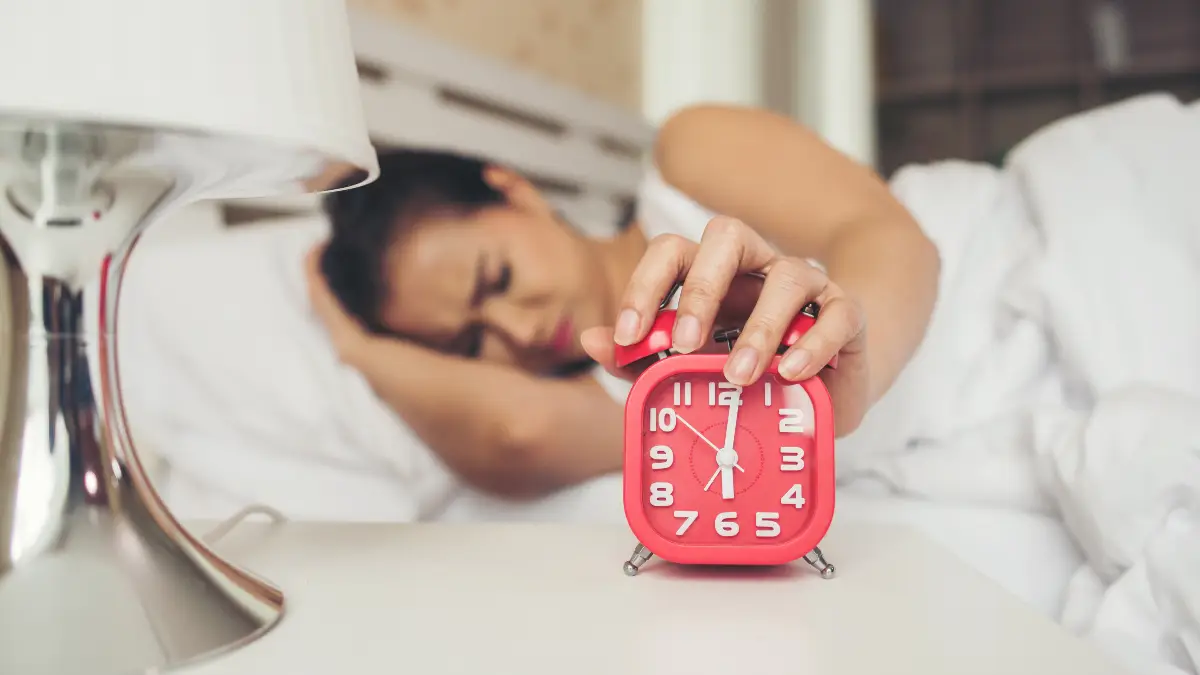
You don’t make sleep a priority. You might stay up late for work, to watch shows, or to hang out with friends. You are building up a “sleep debt.”
Sleep is when your body fixes itself. It controls hormones that manage stress and your metabolism. When you don’t get enough sleep, these hormones get out of balance, which can cause high blood pressure.
People who sleep six hours or less a night can see their blood pressure go up over time. If you already have high blood pressure, not sleeping enough can make it worse.
- Your 2025 Action Plan:
- Beginner: Set a consistent sleep schedule. Go to bed and wake up around the same time every day, even on weekends.
- Intermediate: Make your bedroom a good place to sleep. It should be dark, quiet, and cool.
- Advanced: Create a relaxing routine before bed. For an hour before you sleep, do something calm like reading a book or taking a warm bath. Stay off screens.
11. The Chronic Stress Cycle: Not Managing Daily Pressures

You live with a lot of stress and don’t have good ways to cope. This can come from your job, money worries, or just feeling overwhelmed.
When you’re stressed, your body releases hormones that make your heart beat faster and your blood vessels tighten. This causes a temporary spike in blood pressure. If you’re stressed all the time, these spikes happen over and over, which can damage your arteries. Stress also leads to bad habits like eating poorly and not exercising.
While stress alone might not cause long-term high blood pressure, it’s a big contributor. The constant ups and downs in blood pressure can cause real damage over time.
- Your 22025 Action Plan:
- Beginner: Try mindful breathing. When you feel stressed, take a minute to breathe slowly and deeply. Breathe in for 4 seconds, hold for 4, and breathe out for 6.
- Intermediate: Schedule stress-reducing activities into your week. This could be exercise, yoga, or meditation.
- Advanced: Try to deal with the source of your stress. This might mean changing your schedule or learning to say no to things.
12. The Smoking Crutch: Using Tobacco or Nicotine

You smoke cigarettes, vape, or use other tobacco products.
Nicotine makes your blood vessels tighten up. Every time you use it, your heart rate and blood pressure go up. Over time, smoking damages your arteries, making them stiff and narrow. This leads to chronic high blood pressure.
Smoking is a major cause of preventable disease. Quitting is one of the best things you can do for your blood pressure and your overall health.
- Your 2025 Action Plan:
- Beginner: Pick a day to quit. Tell your friends and family so they can support you.
- Intermediate: Talk to your doctor. They can help you make a plan. There are things like nicotine patches, gum, and medicine that can help.
- Advanced: Focus on the benefits. Celebrate small wins, like being smoke-free for a day or a week. This will help you stay motivated.
13. The Posture Slump: Slouching at Your Desk or on Your Phone

You often slouch or hunch forward when you’re sitting at a computer or looking down at your phone.
Bad posture does two things. First, it sends a stress signal to your brain, which can release hormones that raise your blood pressure. Second, it squishes your chest, which puts pressure on your heart and lungs and makes them work harder.
There is a direct link between bad posture and higher blood pressure. Your body is meant to be upright.
- Your 2025 Action Plan:
- Beginner: Set a timer to remind you to sit up straight every 30 minutes.
- Intermediate: Do the “Wall Test.” Stand with your back against a wall. Your head, shoulders, and bottom should all be touching it. This helps you remember what good posture feels like.
- Advanced: Fix your workspace. Your computer screen should be at eye level. Use a cushion for your lower back.
14. The Pill Problem: Taking Common Medicines Without Thinking
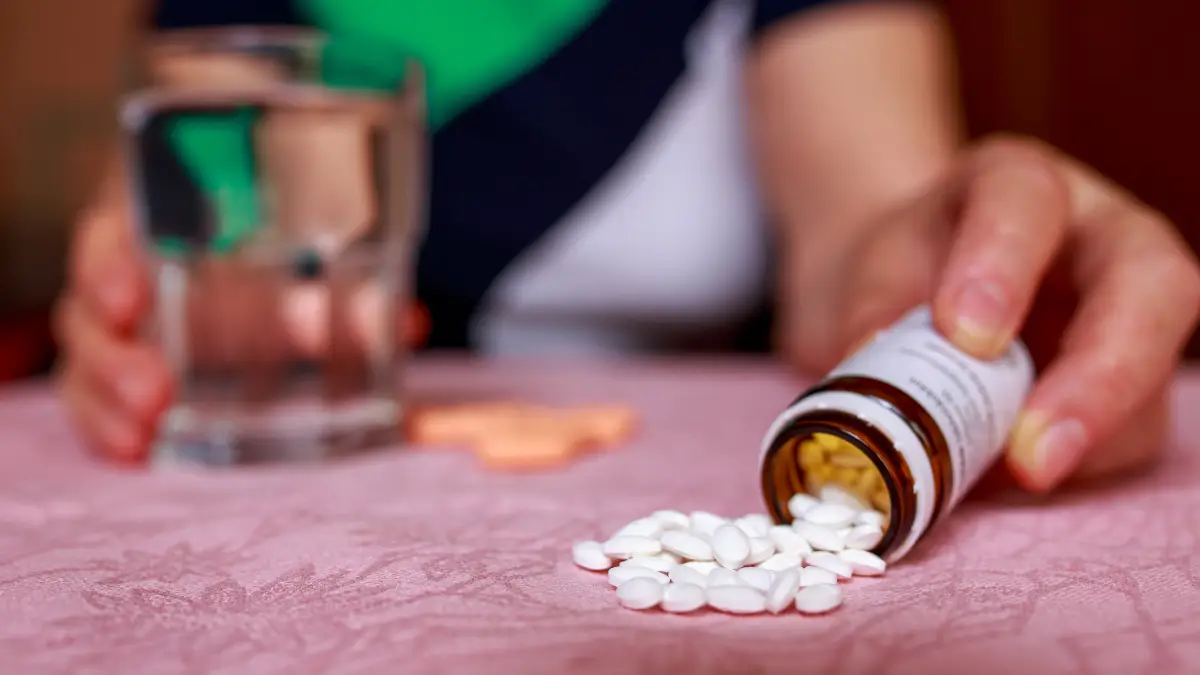
You regularly take over-the-counter (OTC) or prescription pills without knowing how they might affect your blood pressure.
Many common medicines can raise your blood pressure. Some make you hold onto salt and water, while others tighten your blood vessels.
Common pain relievers like ibuprofen (Advil) and naproxen (Aleve) are known to raise blood pressure. Decongestants in cold medicine can also be a problem. Other drugs, like some antidepressants and birth control pills, can have the same effect.
- Your 2025 Action Plan:
- Beginner: Make a list of every medicine and supplement you take, including OTC ones.
- Intermediate: Show this list to your doctor or pharmacist. Ask them if any of them could be affecting your blood pressure.
- Advanced: If you have high blood pressure, look for cold medicines that are specifically made for people with your condition. Never stop taking a prescription without talking to your doctor.
15. The Isolation Effect: Being Lonely

You feel lonely or don’t have a lot of social connection in your life.
Loneliness acts like a powerful, long-term stressor. It makes your body release more of the stress hormone cortisol. This can lead to tighter blood vessels and higher blood pressure.
The effect of loneliness on blood pressure is serious. One study found that over four years, lonely people saw their blood pressure go up by 14 points. This makes loneliness as big a risk factor as being overweight or eating too much salt.
- Your 2025 Action Plan:
- Beginner: Reach out to one person every day. A quick text or call can make a big difference.
- Intermediate: Schedule a regular social activity, like a weekly coffee with a friend or joining a club.
- Advanced: Get involved in your community. Volunteering can help you feel connected. If you feel very lonely, talking to a therapist can help.
16. The “It’s Just Snoring” Myth: Ignoring Signs of Sleep Apnea

You or your partner dismisses loud snoring, gasping for air during sleep, or feeling very tired during the day as nothing to worry about.
Sleep apnea is a serious condition where you stop breathing many times during the night. Each time this happens, your oxygen level drops. Your brain panics and sends signals to tighten your blood vessels to get more oxygen to your heart. This causes sharp spikes in your blood pressure all night long, leading to severe high blood pressure.
Sleep apnea is a known cause of high blood pressure that is hard to treat with medicine. If you don’t treat it, it greatly increases your risk of a heart attack.
- Your 2025 Action Plan:
- Beginner: Take the symptoms seriously. Ask your partner if they’ve noticed you stop breathing or gasp in your sleep.
- Intermediate: Talk to your doctor about your symptoms. They might suggest a sleep study to see if you have sleep apnea.
- Advanced: If you are diagnosed, use the treatment your doctor recommends. It’s often a CPAP machine. This will not only help you sleep better but can also lower your blood pressure.
17. The Domino Condition: Not Managing Other Health Issues

You only focus on your blood pressure but ignore other related problems like high cholesterol or diabetes.
These conditions are all connected. High blood sugar from diabetes damages your arteries. High cholesterol builds up plaque in those damaged arteries. This makes them narrower, and your heart has to pump harder, which raises your blood pressure. It’s a domino effect.
It’s very common to have these problems together. More than half of people with high blood pressure also have high cholesterol. Managing all of them is key.
- Your 2025 Action Plan:
- Beginner: Know your numbers. Get your blood pressure, cholesterol, and blood sugar checked.
- Intermediate: Work with your doctor to create a plan that treats all your conditions, not just one.
- Advanced: Stick to your treatment plan. Managing your cholesterol and blood sugar is a critical part of managing your blood pressure.
18. The BPA Exposure: Using Certain Plastics and Canned Goods
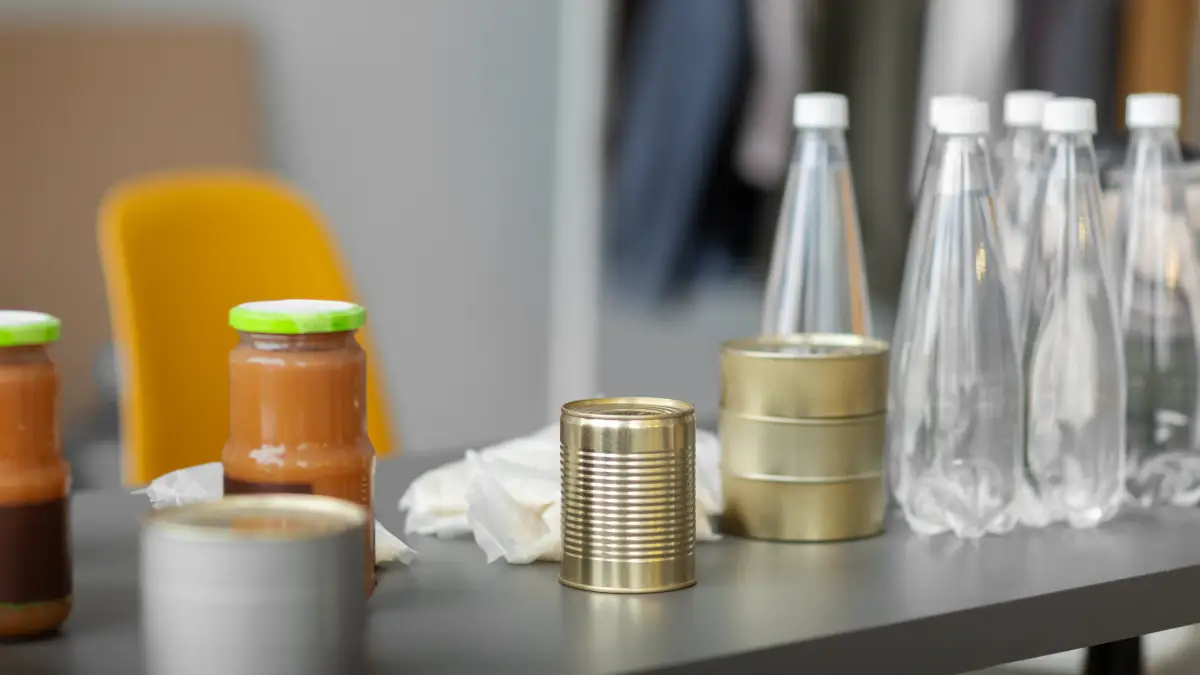
You often eat or drink from containers made with a chemical called BPA. It’s found in some plastics and the lining of most food cans.
BPA can mess with your body’s hormones. It’s been shown to make blood vessels tighten, which can increase your blood pressure.
Studies have shown that when people drank from a can, the BPA from the lining got into their system and caused a small but real increase in their blood pressure.
- Your 2025 Action Plan:
- Beginner: Switch from plastic water bottles to glass or stainless steel ones.
- Intermediate: Look for cans and plastic containers that are labeled “BPA-free.”
- Advanced: Choose fresh or frozen foods instead of canned when you can.
19. The Vitamin D Deficiency: Not Getting Enough Sun

You spend most of your time indoors and don’t eat many foods with vitamin D.
Vitamin D helps control a hormone system that regulates blood pressure. If you don’t have enough vitamin D, this system can get out of whack and cause your body to hold onto salt and tighten blood vessels.
The link between low vitamin D and the body’s blood pressure control system is a good explanation for how a lack of this vitamin could lead to hypertension.
- Your 2025 Action Plan:
- Beginner: Try to get 10-20 minutes of sun on your arms and legs a few times a week.
- Intermediate: Eat foods that have vitamin D, like fatty fish (salmon), fortified milk, and egg yolks.
- Advanced: If you think you might be low on vitamin D, ask your doctor for a blood test. They can tell you if you need a supplement.
20. The “White Coat” Phenomenon: Ignoring High Readings at the Doctor’s Office

Your blood pressure is always high at the doctor’s office, but you assume it’s just because you’re nervous. This is called “white coat hypertension.”
Don’t just ignore these high readings. New research shows that people with this issue might have blood pressure spikes during other stressful times in their day, not just at the doctor’s. Over time, this can cause damage. It’s now seen as a warning sign for future heart problems.
Studies show that “white coat hypertension” is not harmless. It is linked to a higher risk of heart disease down the road.
- Your 2025 Action Plan:
- Beginner: Take high readings at the doctor’s office seriously. It means you need to gather more information.
- Intermediate: Buy a good home blood pressure monitor that has been tested for accuracy.
- Advanced: Check your blood pressure at home correctly. Do it at the same time every day after resting for five minutes. Keep a log of your readings and show it to your doctor. This gives a much better picture of your real blood pressure.

